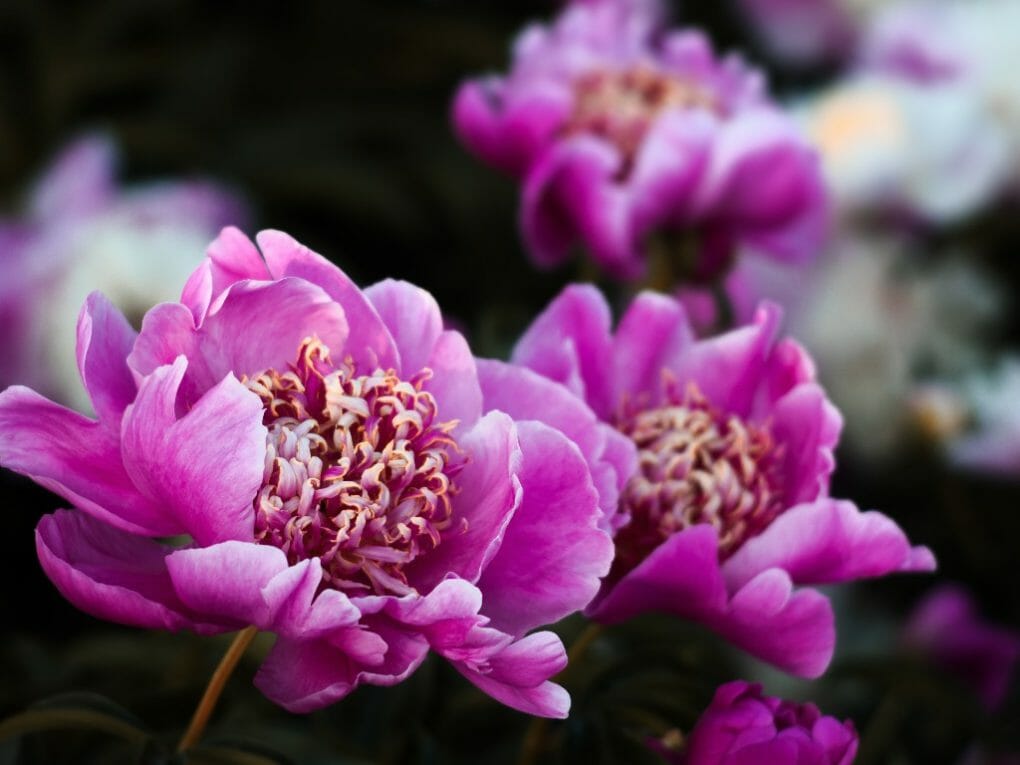Are Peonies Easy to Grow? | Easy-to-Grow Flowers for Beginners

Peonies are simple plants to cultivate once you have the fundamentals in place, despite the widespread belief to the contrary. Peonies should be planted in good drainage soil because they require a lot of water but should not be allowed to become soggy at any point throughout the year. Clay can be used successfully, provided it does not remain moist. There are wide varieties of peonies, each with unique characteristics that make it a favorite choice for gardeners and florists to grow. Want to learn more? In this article, we’ll teach you everything you need to know about growing peonies, from planting tips to how to care for them throughout the season. So whether you’re a beginner or a seasoned flower gardener, read on for all the information you need!
Table of Contents
How to Properly Plant Peony Roots and Bulbs
Before you plant your peony bulbs, you should first let the roots sit in water that is between cold and lukewarm for approximately thirty minutes.
Site Preparation
Because peonies thrive best when they are allowed to remain in the same spot for many years, it is essential to take the time to dig a decent hole and modify the soil before planting them.
Before planting peony bulbs, till the soil to a depth of 12 to 15 inches with a spade or rototiller. You may need to improve the drainage of your clay soil by making some amendments. Incorporating rock dust, compost, or broken stone into your soil can solve the problem.
If your soil is sandy, you should amend it with compost and clay to improve the number of nutrients retained. In addition to that, this will aid in maintaining moisture more effectively.
Ideal Location
To determine the location of your peony plantings, look for a spot that possesses the following qualities:
- Full sun to moderate shade. To produce blooms, peonies require between 4 and 6 hours of exposure to the sun each day.
- Lands that have good drainage. Steer clear of soils that tend to become waterlogged regularly.
- Peonies can thrive in soils with a wide range of pH levels, but they do best in those that are slightly alkaline to neutral.
- Peonies can thrive in a wide range of different soil types (from clay to sand). Peonies grown in clay soil take a little bit longer to establish, but the resulting plants are larger and more robust because the clay soil retains nourishment. Peonies planted in sandy soil need less time to become established, but they may develop less vigorously due to the easy leaching of nutrients from the soil.

Ideal Time to Plant Peonies
Autumn is the time of year that is ideal for planting peonies. This is the time of year when peonies ordered from a catalog are often dispatched to their destination. Peonies cultivated in containers may be blooming and available for purchase in the spring; it is acceptable to plant them at this time. Planting peonies in the fall may be your best option if you live in a cooler climate. Planting peonies at any time of year is possible if you have access to good soil and moisture throughout the year. However, there are several advantages to planting peonies during late summer or early autumn when days are shorter but nights remain warm.
Planting Bush and Itoh Peonies
Adjust the position of the root so that the pink buds are slightly below the surface of the soil ” (between 0.5 and 1″ below ground level). Your peony will not bloom for a more extended period if they are planted deeper.
Backfill the hole with soil, compacting it firmly around the roots with your fingers. Be careful not to hurt the delicate pink eyes. Fully hydrate yourself.
Planting Tree Peonies
Plant the grafted bare root tree peony in a relatively deep hole. The graft union should be 3 and 4 “underneath the surface. Because of this, the tree peony will be stimulated to produce new basal shoots and roots.
Be careful not to drown newly planted tree peonies in excess moisture. This is the primary contributor to unsuccessful outcomes.
Tree peonies have a sluggish beginning. A freshly planted tree peony may seem to produce very little or even no growth during its first season. Do not become very alarmed, mainly if the vegetation appears in good health. Everything takes place beneath the surface. This may be only a “settling-in period.” There are times when the primary stems may experience some degree of mortality. Wait until next spring, when rapid growth should restart from the lowest part of the stem or below soil level, even though this may appear to be concerning and cause concern.
It is recommended that bush and Itoh peonies be planted at a distance of roughly 2 to 3 feet apart. When planting tree peonies, providing at least four to five feet of distance between each plant is preferable.
Care Requirements for Planting Peonies
Provide Fertile Soil
You can help your peonies grow to their full potential by giving them rich soil. Peonies require well-drained soil not to become waterlogged and will not flower well if their roots are constantly saturated. To increase fertility levels, you can amend your soil with compost or organic matter before planting peonies. Organic matter helps improve drainage, while compost provides essential nutrients for blooming plants.
Water Your Peonies Properly
Another key factor in ensuring success for peonies is watering them properly. Over-watering may cause peonies to root rot, while under-watering may not allow them to get the moisture they need to bloom. When planting peonies, be sure to water them well for about a week after planting them to establish their roots. Once they have grown somewhat taller, you can withhold water during the summer months when hot weather is most intense and give it only sparingly during autumn and winter.
Fertilize Your Peonies

In addition, fertilizing your peony plants will help promote blooming and growth. Fertilizers high in nitrogen are best for peonies, as they need more of this nutrient to bloom successfully. A tested fertilizer for peonies is 2-1-1 (two parts tree mulch, one part compost, and one part garden soil). Apply the fertilizer every two weeks during late summer or early autumn when blooms begin to form. Keep an eye on your peonies during flowering and watering, and make sure to provide them with suitable soil, fertilizer, and water conditions to produce flowers of stunning beauty.
Deadheading
Deadheading peonies is another important step in growing them.. Deadhead bloom petals that are starting to wilt, as this will help keep the flower fresh and full-looking for longer. Do not remove full blooms- just cut off the petals that are starting to wilt.
Control Pests and Diseases
Pest and disease problems can be a significant challenge when growing peonies, especially if you do not have any prior experience with these plants. When planting peonies, mix the soil well before adding them to the garden to help against pest and disease issues. Inspect your peony plants regularly for signs of pests and diseases- usually, this will include browning foliage, distortion of flowers or petals, and dried-up leaves at the base of the plant. If you notice any problems, immediately apply insecticidal soap or fungicides as directed on the product label.
